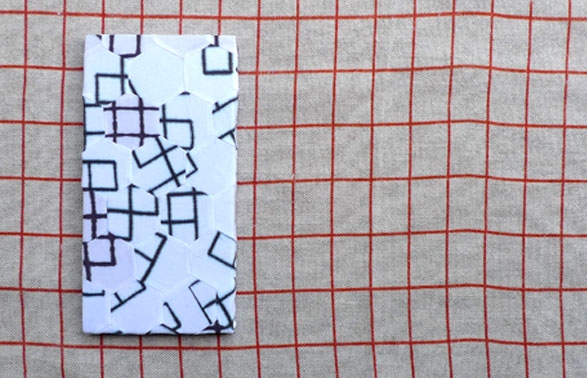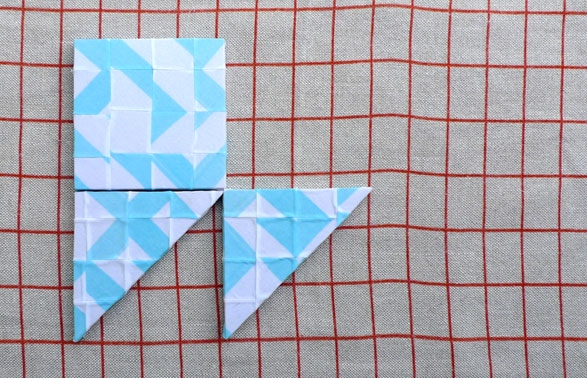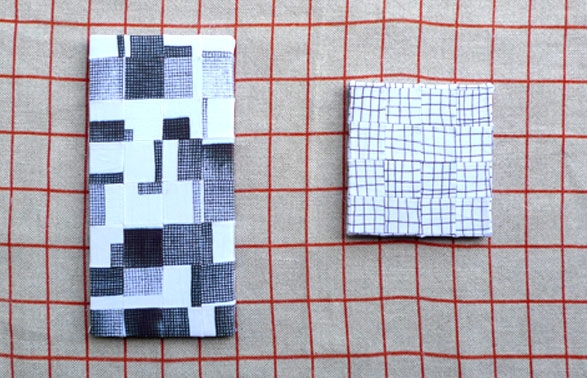


19/20.MBM.1-5.2012
These assemblages are made from waste material collected from the Japanese Mimaki TX2-1600 digital colour inkjet plotter for textiles. The finished pieces reference traditional Japanese Boro textiles, created by reusing and recycling indigo-dyed cotton rags. Test prints and waste ink from the printing process were collected and reconstructed with reference to the Japanese Metabolism Architecture movement.
Mimaki digital fabric printer
Mimaki is a Japanese company that develops and markets inkjet printers and cutting plotters for professional use. The Mimaki TX2-1600 can mount ink variations for a total of eight colours, including four basic colours (cyan, magenta, yellow and key) and four special colours (in this case light magenta, orange, grey and blue).
Assemblage
Assemblage is the process of bringing found, often banal, objects together to form a two- or three-dimensional construction. In an assemblage the objects used retain their original identity and history. Joins between them are not hidden - the mechanics of the finished piece’s construction are seen.
Boro
The term Boro (Japanese for ‘rags’) refers to clothing and household textiles made by Japanese families in the 19th and early 20th centuries. Sewn together from indigo-dyed cotton scraps, these reused and recycled textiles were utilitarian objects born of economic necessity. Patched and re-patched when they became worn, Boro clothing could last a lifetime and even be passed down generations. Today Boro items are collected as unique examples of Japanese folk culture and craft.
Japanese Metabolist Architectural Movement
Metabolism was a modern architecture movement which emerged in post-war Japan. The movement envisioned urban landscapes characterized by large-scale, flexible, expandable structures that reflected the ability of living organisms to grow and transform in response to their environment. Kenzo Tange, one of the most significant architects of the 20th century, was an influential patron of Metabolism.
All rights reserved.
Copyright © Sophie Tarbuck.